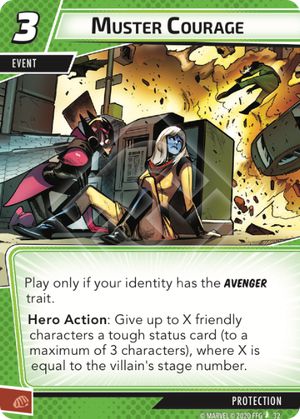TLDR: Outshines Tackle/Hard Knocks in Expert Multiplayer, not many use cases in True Solo. Damage mitigation = threat mitigation.
I think the previous reviews for this card suffer from the "True-Solo Mindset". There may not be many situations where you would play this in True Solo, but as someone who play Expert Campaigns at 3-4 players this card is hard to pass up on. On average it will provide 2 tough statuses. Blocking 2 instances of the villain's attack is almost always worth 3 resources. This is typically more valuable than a Stun Status due to the prevalence of Stalwart/Steady. In multiplayer Stun/Confuse also lose value compared to Solo because they don't stop all of a Villain's activations in a phase.
It also worth mentioning that damage mitigation is effectively delayed threat mitigation. The biggest downside to taking damage is of course the risk of dying. But even if you live, it forces you to flip down and recover. Changing to alter-ego allows the villain to accumulate threat on the main scheme which is the main loss condition. So by reducing the number of times your team has to enter alter-ego throughout a game you are preventing threat from accumulating. The strongest most impactful cards are generally also Hero Form cards so keeping your team in Hero Form also makes up for some of the tempo lost on your own turn.
